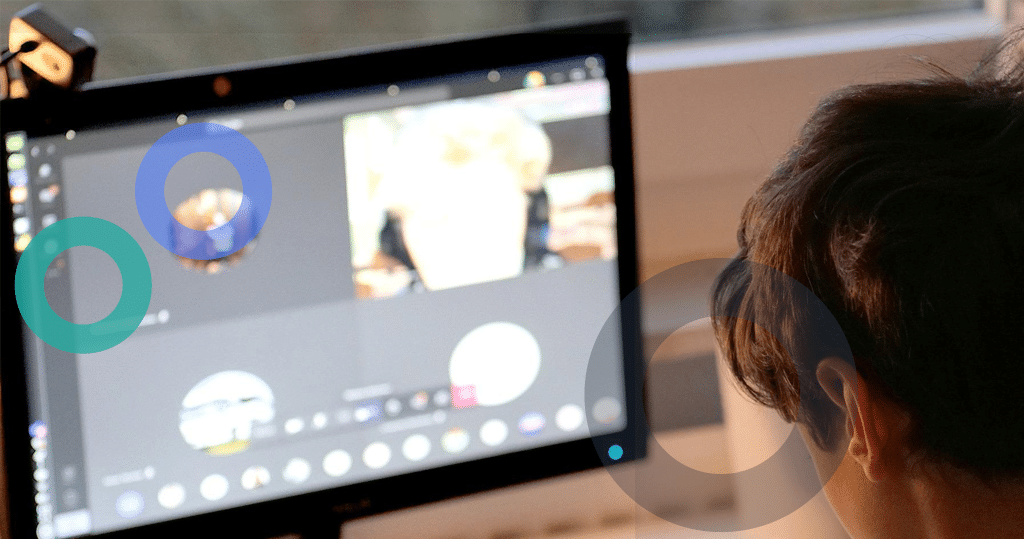Tired of Working

Remote work is a great way to make money, but it can also lead to stress and other common causes of burnout. Remote workers are often less likely to take time off, which can lead to the onset of remote work burnout. These symptoms can include a lack of motivation, depression, and physical pain. Fortunately, remote workers can take certain precautions to avoid remote work tiredness that we’ll discuss later.
Finding Work-Life Balance While Working Remotely
When it comes to remote work, it can be hard to find balance. It can seem like there isn’t enough time in the day. But in order to avoid feeling this way, you must take time out for yourself and make some lifestyle adjustments to improve your emotional energy.
Here are some ways to keep your work-life balance while working from home. But first, read on to find out what is work burnout and its causes. After all, we all know that the pressure to perform at our highest level is huge, and working at home can be exhausting!
If you’re working from home, ensuring that your work-life balance is intact is a top priority. Take breaks throughout the day to talk with colleagues. Consider having video coffee breaks and sharing jokes and memes. You can also take a video coffee break to talk about a show you’ve been binge-watching. This way, you can ensure that you don’t get distracted from your work and have a break.
What is remote work burnout? And what to do against it.
When people who work from home are overworked, stressed, and not passionate about their job, they may be experiencing remote work burnout. Various causes can lead to this type of stress. Long hours, lack of communication, and micromanagement can all contribute to remote workers’ feelings of burnout. In addition, employees may feel tired and pressured to always be available and may feel discouraged from taking vacation days to feel physically fit.
Micro breaks
A traditional office provides a sense of belonging. It’s also possible to find an alternative company that provides the sense of community and belonging you need. While working from home, it’s important to make sure you’re getting micro-breaks and staying socially connected while not in work mode. Staying active and connecting with coworkers and friends can help relieve stress and enhance your health. If you’re feeling home burnout from work-related activities, consider doing something that’s not work-related.
Setting boundaries
Setting clear boundaries is essential. Working from home is challenging for many people. Remote workers have trouble disconnecting from their laptops and feel overwhelmed by tasks. Without breaks, they lose a healthy separation between work and personal life. By scheduling time to recharge, remote workers can prevent remote work burnout and maintain a healthy work-life balance. A Friday off can serve as a substitute for a weeklong staycation.

How to keep a work-life balance?
1. Clear work hours
If you are working from home, achieving a work-life balance is easier said than done. First of all, you should have clear work hours. If you must work during weekends or evenings, you should set them beforehand. It is important not to reply to non-urgent emails after office hours; these can almost always be left until later in the day. Make a schedule and stick to it. This way, you can manage your time well.
2. Dedicated space and workspace
To maintain a work-life balance when working from home, you should dedicate a separate workspace and monitor. This will help you stay focused and prevent you from multitasking. Make a to-do list of tasks that you need to complete and stick to it. It is also important to get fresh air and vitamin D. Sitting at a desk all day can make us drowsy and lethargic. Also, prioritizing our well-being is vital to our health and happiness. It also makes us better parents and partners.
3. Draw boundaries with family
To keep your work-home life balance when working from home, make sure you draw boundaries with your family. Your family might not understand your work schedule. So, draw a line so that they do not disturb you during your working hours. Do not work late into the night or answer phone calls during working hours. Besides, this will help you distinguish between work time and off time.
4. Schedule your day
The next step is to create a schedule. Working from home is different from working in a traditional office. If you are a flexible worker, you should create a schedule for yourself. It will help you plan your personal activities and also give you time for yourself. For instance, you can plan a workout class or happy hour after work. The key to success is to set a schedule and stick to it.
5. Take a break
Setting clear boundaries and creating a balanced routine can also help. Establish an alarm to remind you to take a break and avoid working late. Make sure you schedule time before and after work for “screen breaks.” If possible, leave time in the evening to exercise, walk, or do yoga. Stay connected with a buddy who is also a remote worker will be a big help in avoiding remote work fatigue. So make sure to schedule a rest day.
Why is dealing with zoom fatigue important?
Virtual work comes with new challenges. Aside from the demands of COVID-19, you have other responsibilities that can contribute to remote work fatigue. When you’re tired, you can’t process new tasks properly, and your mind can feel tense. It’s not uncommon to experience stress and fatigue due to long hours of repetitive tasks and a constant stream of emails and video calls. To fight fatigue, make sure to schedule breaks, take short walks to a nearby cafe, and plan proper time management.
While working from home is convenient, many people have other responsibilities, such as childcare, family, and social life. These tasks can affect a remote worker’s well-being and lead to fatigue. For example, you must cope with multiple roles, attend video conferencing, and meet with your team and boss. This can make you feel drained and lead to burnout.
The most important thing to keep in mind while working from home is to make sure your employees are not experiencing remote work fatigue. This is not uncommon. Employees who are not interacting with their co-workers often become tired and disengaged. It may also lead to poorer productivity and even employee turnover. But it is important to understand what causes work from home fatigue and how to avoid it. It may even be difficult for you to find the right balance between work and personal life.

Causes of Zoom fatigue
While working from home is a great way to get work done even while wearing sweatpants, it can also be very draining. Distractions from home, such as children, can make working from home a difficult task. It can be hard to re-energize and set boundaries.
Work-at-home fatigue can lead to many negative effects. You may feel drowsy and tired before the day even begins. You may experience problems focusing, feeling irritable, or even experiencing new persistent headaches. You may find yourself less productive than you were before you worked from home. Recognizing these symptoms is the first step to addressing them.
Lack of social interaction
Lack of social interaction and routines are common causes of home fatigue. While working from home can increase employee satisfaction, it can also affect their productivity. Working from home also creates challenges in everyday life. Working from home can be especially stressful during COVID when family members are forced to stay at home due to an emergency.
Distracted from other commitments
A common cause of home fatigue is being distracted by other commitments. As a remote worker, you have to take on multiple roles instead of focusing on one task at the same time. This can be exhausting, as you may not be able to concentrate on all of them without getting distracted. The constant juggling can cause you to feel overwhelmed, which will lead to fatigue and stress. It’s also difficult to stay alert while working from home when you’re attempting to complete different tasks.
Work from home fatigue-how to minimize?
Although working from home (with the comon used acronym “WFH” in social media) has its perks, long hours glued to the computer can lead to work from home fatigue and you may start to feel sluggish. These symptoms can manifest as physical or mental, including neck and shoulder tension, eye strain, and headaches. In some cases, work-from-home fatigue can cause a person to lose focus and is difficult to maintain. Here are some tips to minimize work-from-home fatigue. You may be surprised to discover that you’re already suffering from the problem.
Meals and snacks
An important tip for minimizing brain fatigue is to plan consistent meals and nutritious snacks times. It’s important not to skip meals, but to set a strict “quitting time.” The sooner you can eat, the better. Also, eat get enough sleep, and healthy snacks like carrot sticks, string cheese, and apples. This way, you can keep your metabolism up and feel more energetic. If you work from home, you’ll feel less fatigued if you don’t eat unhealthy snacks.
Regular exercise
One of the most common causes of work-from-home fatigue is the lack of exercise. Traditional workspaces require co-workers to be physically present and get out of the house regularly, but telecommuters tend to be stuck in the same place for the entirety of the day. Regular exercise and deep breaths can help alleviate WFH fatigue, as it releases endorphins and improves mood. Walking or jogging on a treadmill after your meetings or a short walk after a video call will do wonders for your mood. If you’re not up for a long workout, you can set a timer to exercise for five minutes.
Team collaboration tools
Aside from remote work, juggling other responsibilities can also lead to fatigue. If you’re a remote worker, this may negatively affect your life and lead to a high incidence of burnout among your employees. As such, it is critical to consider how technology can help you avoid remote work fatigue. And if it’s not possible to remove all responsibilities, it’s a good idea to set up some tools that can ease the burden of remote work.
In a world where the workforce is increasingly fragmented, the need for effective tools to manage WFH fatigue is even more pressing. While a team’s physical workspace is crucial, the same can’t be said for virtual workspaces.
Conclusion
While it is important to take regular breaks, if you are working long hours, you may be at risk of getting burnt out. Fatigue impairs the ability to concentrate, which can lead to decreased productivity.
Besides the physical effects of fatigue, overworked workers can be moody and impulsive. They may not be able to notice safety issues or communicate well with others, which can result in poor work performance and lower morale.
So take care of yourself and as a manager, deal with these problems within your workforce by adressing it in the first place and working with your team on standards and solutions.
Solutions against tiring work
As you can imagine, we are not just writing about this stuff because we felt like it, but because we have a solution for the problem. And that one is called yowork.io!
From meeting management and task management to shared workstreams – yowork.io helps you to add engagement to teamwork and spark new creativity! Boost productivity in your organization! Keep your teams engaged! Make it more fun working in your organization and master the art of effective meetings – on premise or remote!
We do not replace, but integrate with other collaboration tools like Microsoft Teams and Google Workspace, but adding freakin’ productivity to them! Check it out with your personal forever free account!
all images Pixabay





